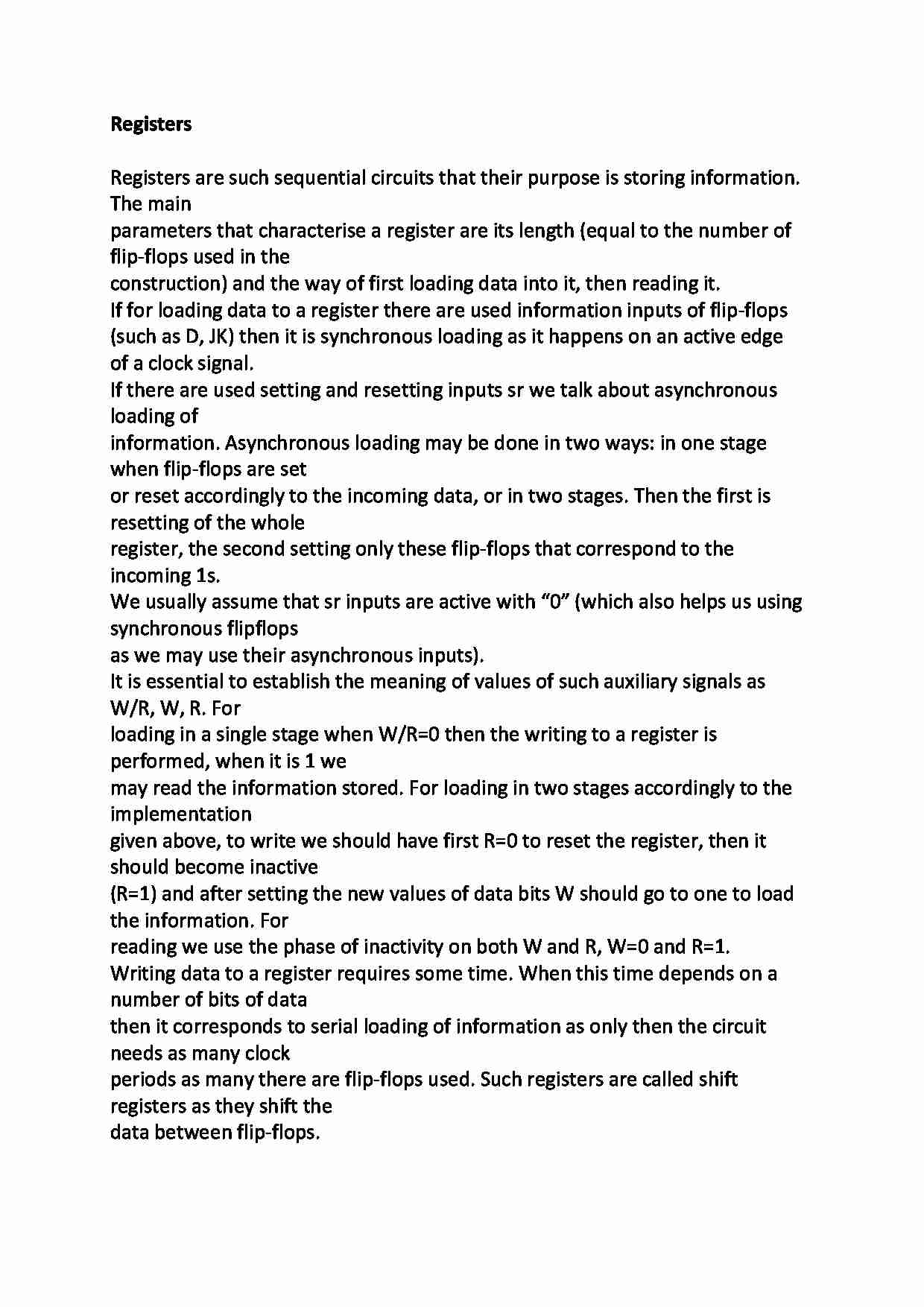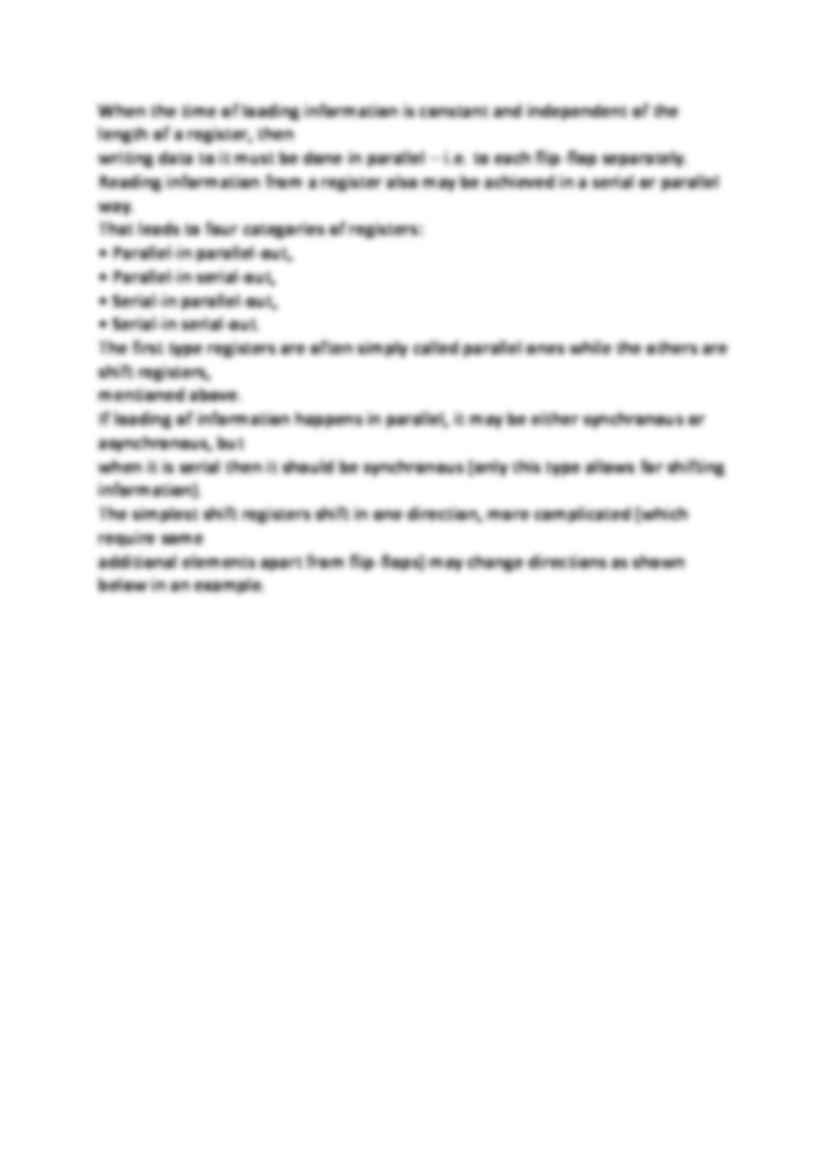To tylko jedna z 2 stron tej notatki. Zaloguj się aby zobaczyć ten dokument.
Zobacz
całą notatkę


Registers Registers are such sequential circuits that their purpose is storing information. The main
parameters that characterise a register are its length (equal to the number of flip-flops used in the
construction) and the way of first loading data into it, then reading it.
If for loading data to a register there are used information inputs of flip-flops
(such as D, JK) then it is synchronous loading as it happens on an active edge
of a clock signal.
If there are used setting and resetting inputs sr we talk about asynchronous loading of
information. Asynchronous loading may be done in two ways: in one stage when flip-flops are set
or reset accordingly to the incoming data, or in two stages. Then the first is resetting of the whole
register, the second setting only these flip-flops that correspond to the incoming 1s.
We usually assume that sr inputs are active with “0” (which also helps us using synchronous flipflops
as we may use their asynchronous inputs).
It is essential to establish the meaning of values of such auxiliary signals as W/R, W, R. For
loading in a single stage when W/R=0 then the writing to a register is performed, when it is 1 we
may read the information stored. For loading in two stages accordingly to the implementation
given above, to write we should have first R=0 to reset the register, then it should become inactive
(R=1) and after setting the new values of data bits W should go to one to load the information. For
reading we use the phase of inactivity on both W and R, W=0 and R=1.
Writing data to a register requires some time. When this time depends on a number of bits of data
then it corresponds to serial loading of information as only then the circuit needs as many clock
periods as many there are flip-flops used. Such registers are called shift registers as they shift the
data between flip-flops.
When the time of loading information is constant and independent of the length of a register, then
writing data to it must be done in parallel - i.e. to each flip-flop separately.
Reading information from a register also may be achieved in a serial or parallel way.
That leads to four categories of registers:
• Parallel-in parallel-out,
• Parallel-in serial-out,
• Serial-in parallel-out,
• Serial-in serial-out.
The first type registers are often simply called parallel ones while the others are shift registers,
mentioned above.
If loading of information happens in parallel, it may be either synchronous or asynchronous, but
when it is serial then it should be synchronous (only this type allows for shifting information).
The simplest shift registers shift in one direction, more complicated (which require some
... zobacz całą notatkę




Komentarze użytkowników (0)